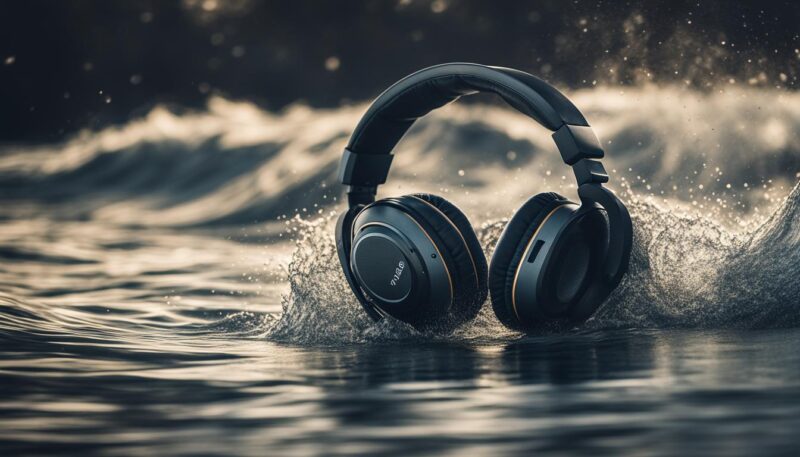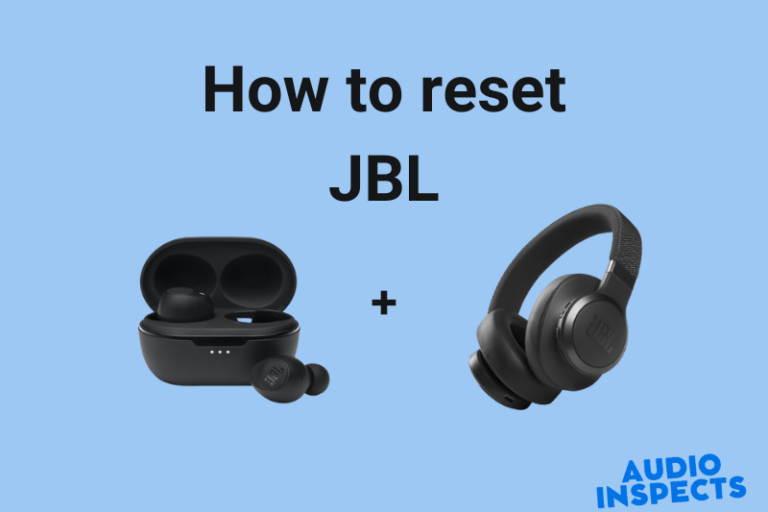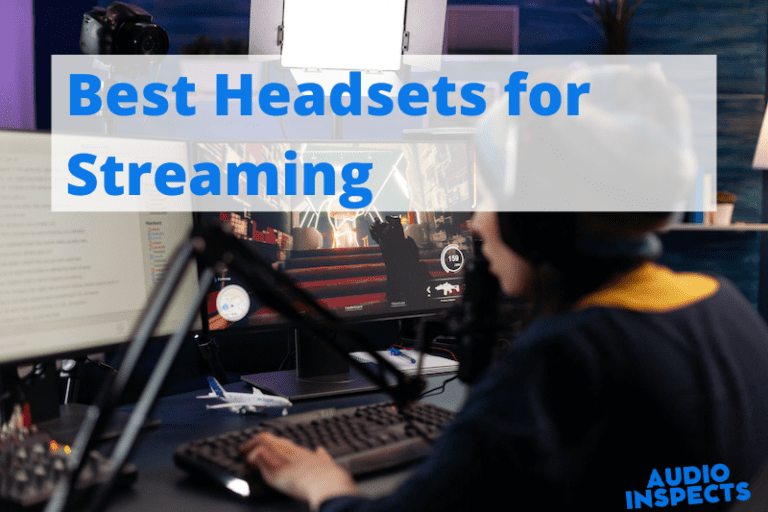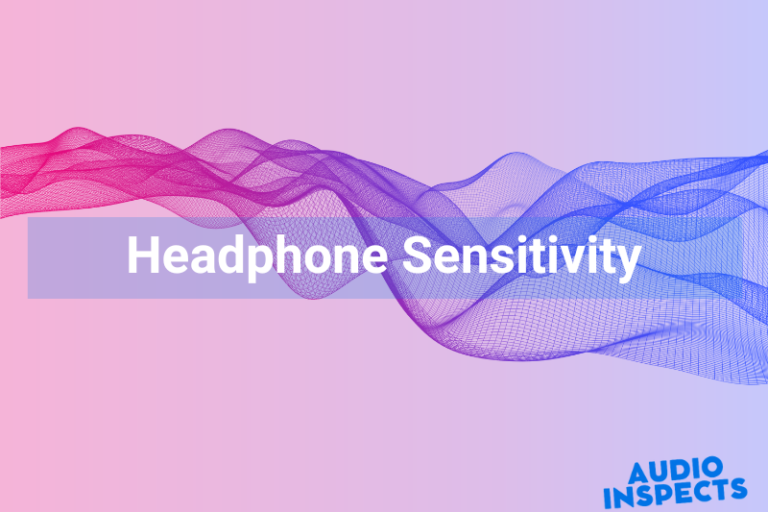Uncovering Secrets: How Do Noise-Canceling Headphones Work?
Noise-canceling headphones are a type of headphones that cancel out background noise. The two most common types of noise cancellation are active noise cancellation or ANC, and passive noise cancellation.
Active noise-canceling headphones use batteries to power the noise-canceling feature. This is done by using a microphone to listen to the ambient noise around you and then create a sound wave that is the opposite of the ambient noise, which cancels it out. While passive noise-cancelling headphones rely on sealant in the ear cups to block out noise.
But have you ever wondered how noise-canceling headphones work? In this article, I will delve into the fascinating world of noise-canceling technology, explaining the science behind it and exploring the mechanics that make it all possible.

Key Takeaways:
- Noise-canceling headphones use active noise-cancellation technology to neutralize external sounds.
- Active noise cancellation is achieved through the generation of special noise waves that cancel out the original sound waves.
- Noise-canceling headphones can be implemented through feed-forward, feedback, or hybrid noise cancellation.
- Sound is a form of energy that travels in waves, and noise-canceling technology aims to counteract noise through noise cancellation and auditory masking.
- The mechanics of noise cancellation involve microphones, noise-canceling circuitry, and the generation of anti-noise waves.
- Noise-canceling headphones provide an immersive audio experience, protect your hearing, and minimize noise in noisy environments.
What is Noise Cancellation on Headphones?
Active noise cancellation, often referred to as ANC, is the key feature that sets noise-canceling headphones apart from regular ones. These headphones don’t just block out sound passively; they actively counteract external sounds through a process known as noise cancellation. By generating special noise waves that are 180° out of phase with the original sound waves, ANC headphones effectively neutralize the unwanted noise.
Noise cancellation can be achieved in different ways, such as feed-forward noise cancellation, feedback noise cancellation, or a combination of both known as hybrid noise cancellation. While effective at reducing low-frequency noise, noise-canceling headphones may have a limited impact on high-frequency sounds. To further enhance noise reduction, these headphones often incorporate passive noise reduction techniques, creating an audio isolation bubble that allows you to immerse yourself in your desired audio.
How Does Noise-Canceling Headphones Work?
When using noise-canceling headphones, it’s essential to understand the science behind sound and noise. Sound travels in waves, consisting of compressions and rarefactions. Unwanted sounds, or noise, can disrupt our concentration and cause stress. However, noise-canceling technology counteracts noise through a combination of noise cancellation and auditory masking. By producing equal and opposite waves, noise-canceling headphones nullify unwanted sound waves, enabling you to enjoy your desired sound without the need for excessive volume.
The mechanics of noise cancellation involve the use of microphones to capture ambient sounds, which are then analyzed by noise-canceling circuitry. The circuitry generates anti-noise waves with the same amplitude as the external noise. When these waves combine, they cancel out each other, effectively reducing or eliminating the external noise. This can be called sound wave cancellation.
A noise-canceling headphone features a multitude of benefits. They create a serene audio experience by blocking out external noise and allowing you to enjoy your favorite music, podcasts, or movies without distractions. They also provide hearing protection by reducing the need for high volume, which can be damaging to your ears. Additionally, noise-canceling headphones are ideal for noisy environments, such as airplanes or busy offices, as they incorporate passive noise reduction techniques to further minimize ambient noise.
In conclusion, noise-blocking headphones are a fantastic invention that allows us to escape the hustle and bustle of the outside world and immerse ourselves in a peaceful audio experience. The active noise cancellation technology they employ truly works wonders, providing us with a serene audio escape. However, it’s important to consider their limitations and potential side effects, such as aural isolation and discomfort.

The Science Behind Sound and Noise
Sound waves and noise play a significant role in our auditory perception. Understanding the science behind sound and noise is crucial in comprehending how noise-canceling headphones work. Sound is a form of energy that travels in waves, consisting of compressions and rarefactions. It is perceived by our ears and interpreted by our brain as sound. On the other hand, noise refers to unwanted sounds that can disrupt concentration and cause stress.
Noise-canceling technology aims to counteract noise through two primary processes: noise cancellation and auditory masking. Noise cancellation involves generating equal and opposite sound waves to neutralize unwanted sounds. By producing anti-noise waves that are 180° out of phase with the original sound waves, noise-canceling headphones can effectively cancel them out, allowing the listener to enjoy their desired sound without the need for excessive volume.
Auditory masking refers to the phenomenon where the perception of one sound can be influenced by the presence of another sound. In the context of noise-canceling headphones, this means introducing a desired sound that masks or covers up unwanted noise. By providing a more prominent and pleasant auditory stimulus, auditory masking helps reduce the perception of noise and enhances the overall listening experience.
Sound Perception and the Role of Noise Canceling Technology
The human ear is capable of perceiving a wide range of sounds, from whispering whispers to booming explosions. Our perception of sound is influenced by various factors, including frequency, intensity, and duration. Noise-canceling technology is designed to selectively target specific frequencies and intensities to provide the most effective noise reduction. While it may not completely eliminate all types of noise, noise-canceling headphones excel at reducing low-frequency sounds, such as the hum of an airplane engine or the rumble of a train.
By creating a serene listening environment, noise-canceling headphones offer numerous benefits. They allow users to focus on their desired sound without being distracted by external noise, making them ideal for studying, working, or simply enjoying music. Additionally, by reducing the need for high volume levels, noise-canceling headphones help protect the listener’s hearing, which is especially important in noisy environments.
Overall, understanding the science behind sound and noise is key to appreciating the effectiveness of noise-canceling headphones. By leveraging the principles of sound waves, destructive interference, and auditory masking, these headphones provide a tranquil audio escape, enabling individuals to immerse themselves in their desired sounds while minimizing the impact of unwanted noise.
The Mechanics of Noise Cancellation
Noise-canceling headphones have revolutionized the way we experience audio by effectively reducing or eliminating external noise. This is made possible through the implementation of active noise cancellation technology, which involves the use of microphones and anti-noise waves to counteract ambient sounds.
When you put on a pair of noise-canceling headphones, built-in microphones pick up the external sounds around you. These microphones capture the ambient noise and send it to the noise-canceling circuitry within the headphones. The circuitry then analyzes the sound waves and generates anti-noise waves that have the same amplitude but are 180° out of phase with the external noise.
When the anti-noise waves combine with the original sound waves, they cancel each other out, resulting in a significant reduction of the external noise. This process allows you to enjoy your desired audio without the interference of background sounds. The effectiveness of noise cancellation can vary depending on factors such as the quality of the headphones and the frequency and intensity of the noise being canceled.
It is important to note that while noise-canceling headphones provide an immersive audio experience, they do have limitations. Some users may experience aural isolation, where the absence of external noise can make them feel disconnected from their surroundings.
Additionally, prolonged use of noise-canceling headphones at high volumes can result in discomfort and potential hearing damage. Therefore, it is essential to use noise-canceling headphones responsibly and be aware of their potential side effects.

Comparison of Noise Reduction Algorithms
| Algorithm | Pros | Cons |
|---|---|---|
| Feed-forward | – Effectively cancels out low-frequency noise – Provides immediate noise reduction | – Less effective at canceling high-frequency noise – May introduce audio artifacts |
| Feedback | – Effective at canceling varying noise frequencies – Can provide better sound quality | – Slightly delayed noise reduction – May be susceptible to audio feedback |
| Hybrid | – Combines the benefits of feed-forward and feedback algorithms – Offers a balance between noise reduction and sound quality | – More complex implementation – May require more processing power |
Despite the limitations, noise-canceling headphones continue to be popular for their ability to create a peaceful audio environment. They provide a gateway to a serene audio escape, allowing listeners to fully immerse themselves in their desired sounds while minimizing external distractions.
Noise-Canceling Headphones: Features and Benefits
Noise-canceling headphones offer a range of features and benefits that make them a popular choice for audio enthusiasts, frequent travelers, and individuals looking to create a serene listening experience. With their advanced technology and design, these headphones provide an immersive audio experience while offering several advantages.
Immersive Audio Experience
One of the key features of noise-canceling headphones is their ability to block out external noise, allowing listeners to fully immerse themselves in their desired audio. Whether it’s enjoying music, watching movies, or focusing on a podcast, noise-canceling headphones create a tranquil listening environment by minimizing distractions and providing a more concentrated audio experience.
Hearing Protection
By reducing the need for high volume levels, noise-canceling headphones help protect the listener’s hearing. Excessive exposure to loud sounds can lead to hearing loss and other auditory issues. Noise-canceling technology allows users to enjoy their audio content at lower volumes without sacrificing clarity or richness, making them a safer choice for long-term listening.
Passive Noise Reduction
In addition to active noise cancellation, many noise-canceling headphones incorporate passive noise reduction techniques to further minimize ambient noise. These headphones are designed to create a physical barrier between the ears and the outside world, effectively blocking out a significant amount of external sounds. This makes them particularly useful in noisy environments such as airplanes, offices, or busy urban areas.
FAQs
How do noise-canceling headphones work?
Noise-canceling headphones use active noise-cancellation technology to neutralize external sounds. This is achieved through the generation of special noise waves that are 180° out of phase with the original sound waves, resulting in their cancellation.
What is active noise cancellation?
Active noise cancellation in headphones can be implemented through feed-forward noise cancellation, feedback noise cancellation, or hybrid noise cancellation. It involves the use of microphones to capture ambient sounds, which are then analyzed by noise-canceling circuitry to generate anti-noise waves with the same amplitude as the external noise. When these waves combine, they cancel out each other, effectively reducing or eliminating the external noise.
Do noise-canceling headphones work for all types of noise?
While noise-canceling headphones are effective at reducing low-frequency noise, they may have a limited impact on high-frequency sounds. They also often incorporate passive noise reduction techniques to further minimize ambient noise.
What are the benefits of noise-canceling headphones?
Noise-canceling headphones provide an immersive audio experience by blocking out external noise and allowing the listener to focus on their desired sound. They also help protect the listener’s hearing by reducing the need for high volume. Additionally, they often incorporate passive noise reduction techniques, making them ideal for noisy environments.
What are the potential limitations and side effects of noise-canceling headphones?
Noise cancellation has its limitations, such as aural isolation and discomfort. It is important to consider these potential side effects before using noise-canceling headphones.
Conclusion
Noise-canceling headphones have gained tremendous popularity in recent years, and it’s no wonder why. With their active noise cancellation technology, these headphones provide a serene audio escape for users, allowing them to enjoy their desired audio content without the disturbances of external sounds.
The mechanics behind noise-canceling headphones involve the generation of anti-noise waves that effectively cancel out the incoming sound waves. This clever technology creates a tranquil listening environment, enabling users to immerse themselves fully in their audio experience.
While noise-canceling headphones offer numerous benefits, it’s important to consider their limitations. They may have a limited impact on high-frequency sounds, and long-term use can lead to aural isolation and discomfort for some individuals. However, for those seeking a peaceful audio experience, these headphones provide a convenient solution.
In conclusion, noise-canceling headphones equipped with active noise-cancellation technology are a game-changer in the realm of audio devices. They offer a serene audio escape, allowing users to shut out the noise of the outside world and indulge in their favorite audio content. Whether you’re a frequent traveler, an avid music enthusiast, or simply seeking a moment of tranquility, noise-canceling headphones are a worthy investment for a serene audio experience.
Our Mission: At AudioInspects, we are dedicated to providing the most comprehensive and authentic reviews of audio equipment on the market. We conduct independent testing and research of products, so you can make an informed decision before making a purchase. Our mission is to help you find the best audio equipment to improve your listening experience. So trust us to deliver the most reliable recommendations and advice.
Disclosure: When you do decide to make a purchase through our links, please note that we may earn a commission, but this does not affect the honesty of our reviews. You can read our affiliate disclosure in our Disclosure.






